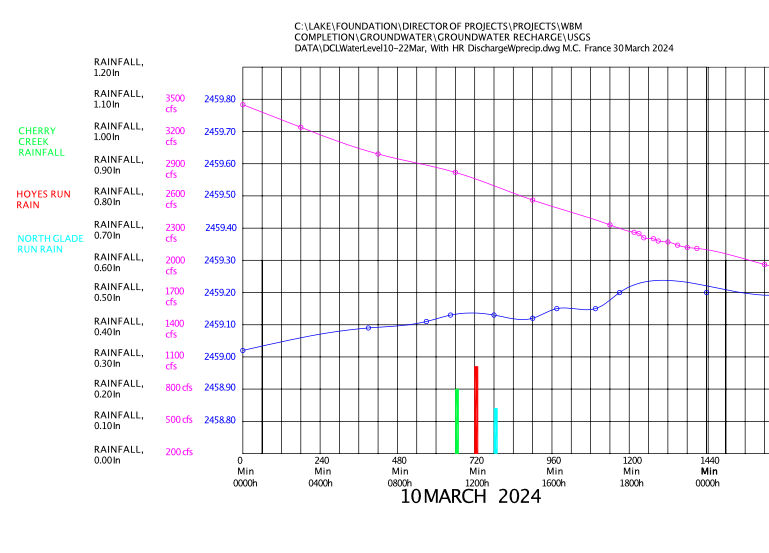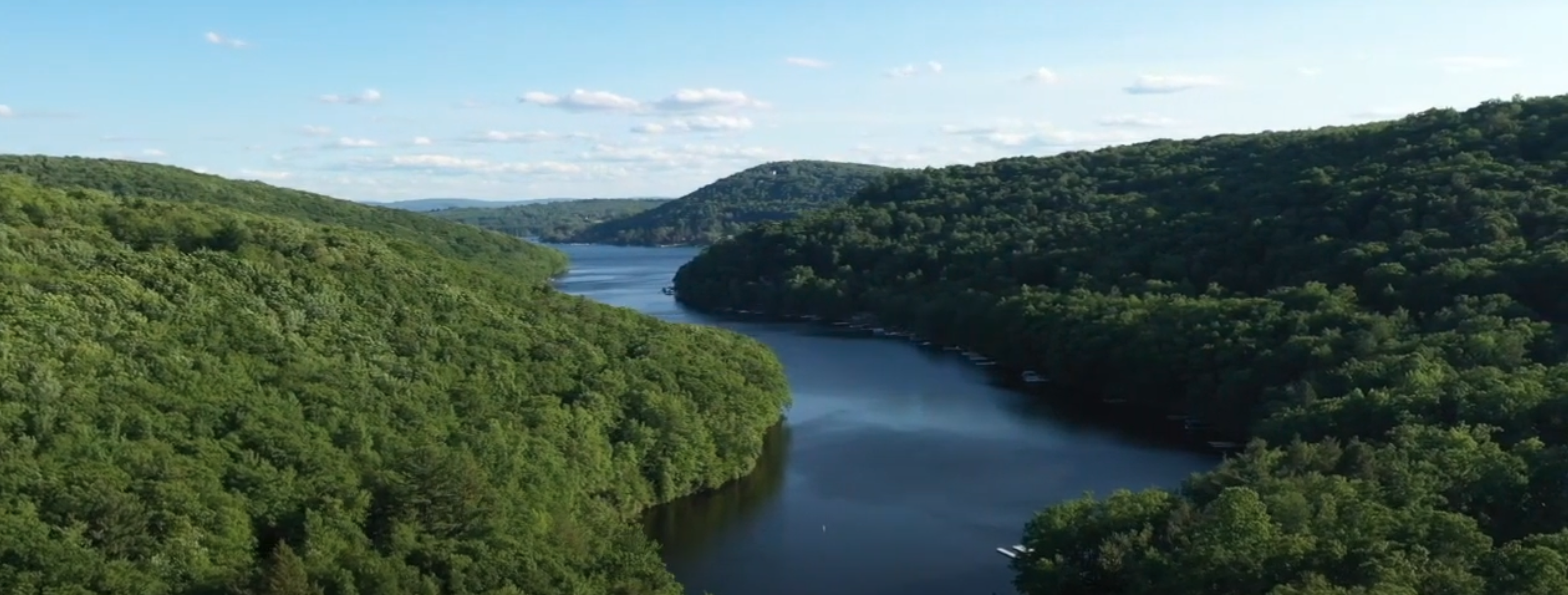| Gauge build and Equipment Purchase | Annual Operation and Maintenance | Foundation Contribution | USGS Match | Total Cost | |
| Recording Lake Water Temperature Gauge at State Park | $1,200 | $3,050 | $4,250 | $0 | $4,250 |
| Recording Lake Water Level Gauge at State Park | $4,800 | $6,260 | $11,060 | $0 | $11,060 |
| Co-located Precipitation Gauge at Hoyes Run | $8,155 | $4,575 | $12,730 | $0 | $12,730 |
| Co-located Precipitation Gauge at Cherry Creek | $8,155 | $4,575 | $8,155 | $0 | $12,730 |
| Stream Gauge upstream of Brookfield Power in Youghiogheny River | $21,750 | $18,600 | $39,660 | $0 | $40,350 |
Recharge Report 3 April 2024
Data for Deep Creek Lake was extracted from the USGS websites for Deep Creek Lake levels, precipitation for North Glade Run, Cherry Creek, and Hoyes Run, and the flow in the Youghiogheny River at Hoyes Run.
The data was plotted using Excel and AutoCAD to draft all the parameters in the same drawing. When plotted on letter-sized sheets and assembled into one, the results are over eight feet long… So, the days are plotted individually and included as .pdf documents so that they can be accessed readily.
During periods of rainfall, the precipitation is immediately added to the water level. This is evident on the 10th and 15th of March. The stream flow in the Youghiogheny River reacts later due to the travel time. Incidentally, twelve hours after the end of a rainfall event all of the runoff has occurred. The remainder soaks into the ground and is taken up by evaporation and entering the groundwater table.
The discharge from the power plant is inferred by subtracting the baseflow from the river discharge. From the area under the plant discharge record above, the estimated base flow per unit time indicates the plant discharge. The time of discharge signature is more discrete.
The total estimated power plant discharges for the period total 2,943 Ac-Ft (One acre of water, one foot deep). Using the storage-vs-lake level derived from prior work by the Maryland Geologic Survey and power plant records, the net change in lake storage minus the discharge is 1,662 Ac-Ft. In other words, 2,943 Ac-Ft through the power plant plus the 1,662 Ac-Ft increase in lake level for the period is 4,605 Ac-Ft.
An average of 1.13 inches of water fell on the watershed during that period. Assuming a drainage area of 40,000 acres for the lake and assuming that all of the water entered the lake during the period, 3,767 Ac-Ft would have been added. Arithmetic indicates that at least a thousand acre-feet of more water came into the lake than went out. Note that the lake level on the 22nd was about 0.4 feet, or about 5 inches higher than at the beginning of the period, considering about one inch of rain on the watershed and close to three thousand acre-feet of power generation.
This brief analysis is similar to the work that our consultant CEC will perform over a much longer period of time to measure the influence of groundwater recharge and incorporate it into the completed water budget model.
Respectfully submitted,
Morgan C. France, PE(ret)


